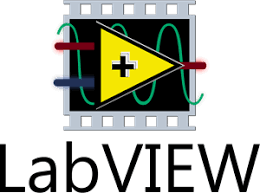Researching potential Sensors
- Mikecon Cenit
- Jan 29, 2019
- 2 min read
I have surf the web and research necessary sensor types needed for the exoskeleton. After reading several relevant scholar articles regarding controlling robot/exoskeleton with the movement of the human body in respect to the human bio-mechanical movement similar to this major. I have decided to use Electromyography (EMG) sensor and Flex sensor to control the exoskeleton. Further explanation why choose these sensor are covered in this blog.
EMG Sensor
My supervisor has recommended to use BITalino hardware and software toolkit to start up the EMG research development to control the exoskeleton. Although there are many EMG sensor product in the market to choose from. I am going to proceed on using BITalino as it readily available for. This will cut the time frame of ordering the sensors to developing sets of generalized codes to be used to control the exoskeleton. BITalino hardware and software toolkit is specifically designed to read body signals such as electrocardiography (ECG), Electromyography (EMG) and more. BITalino can be incorporate on LabView which my main software application on is developing my software for the exoskeleton. BITalino hardware (r)evolution board kit can be connected to the computer via Bluetooth. Bluetooth do have an information transfer lag, which can be detrimental when used as a controller, but on our case scenario it should not cause to much problem due to us gather other information from the flex sensor. On the other hand, wire connection has gives out mechanical problem. This problem comes from the human body joints movement. Wires must be mounted on the center of the eye of the joints to prevent the wire being pulled heavily when the exoskeleton flexes.
Flex Sensor
Flex sensors provides information that has a good degree of precision, reliability and repeat-ability. The Flex sensor gives out Analog value which can be read using an Arduino Uno micro-controller. I will be using 4.9 inch length flex sensor. The sensor will me mounted on the front knee. Arduino Uno can be connected to computer via USB connection. Arduino Uno is can connect with LabView software. In the time frame of prototyping. The flex sensor will then be connected to MyoRio.
Author's Notes
“After researching the data regarding BITalino hardware and software toolkit, I may need to adjust the time frame on the Gantt chart regarding the process of development of generic LabView code for EMG signal. As I feel I still lack the understanding the usage of BITalino products. I post an email to my supervisor regarding the ordering of the flex sensor.”










Comments